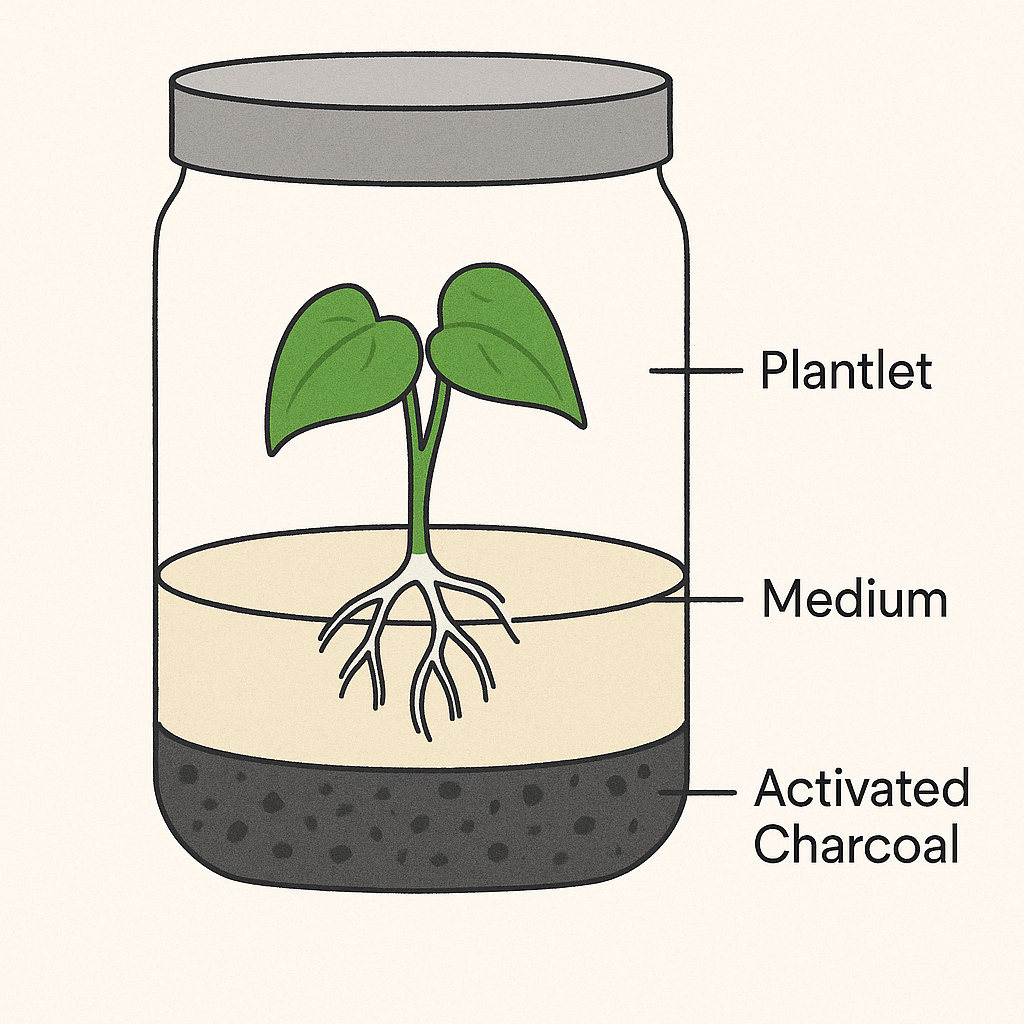
The Role of Activated Charcoal in Plant Growth Media
Share
When you think of activated charcoal, you might picture health supplements or water filters. But in the world of plant tissue culture, activated charcoal (AC) plays an essential role in creating successful growth media. For growers working with rare tropical plants, it can mean the difference between thriving cultures and stubborn failures.
🌱 What Is Activated Charcoal?
Activated charcoal is a highly porous form of carbon treated to increase its surface area. This porous structure allows it to absorb impurities, toxins, and even plant growth regulators in the culture medium. In plant science, AC is typically added in powdered form to growth media at concentrations ranging from 0.5–3.0 g/L, depending on the species and stage of culture.
🔬 Why Activated Charcoal Matters in Tissue Culture
1. Absorption of Inhibitory Compounds
Plants release phenolic compounds when stressed or cut. In a sealed culture vessel, these compounds can build up and become toxic to the explant, turning the medium brown or black. Activated charcoal binds these phenolics, protecting plant tissue from damage.
2. Improved Rooting & Acclimation
By absorbing excess plant hormones (like auxins or cytokinins) in the media, AC creates a cleaner environment that encourages stronger root formation. This is especially useful during the transition from multiplication stages to rooting and acclimation.
3. Light Filtration
Activated charcoal darkens the media, reducing light penetration. This mimics the natural soil environment for roots and can stimulate more natural root growth in otherwise transparent containers.
4. Nutrient Regulation
Its adsorptive properties can also moderate nutrient release, preventing the buildup of toxic levels of salts or growth regulators. This makes the growth environment more stable over time.
5. Support for Sensitive Species
Rare tropicals like Anthuriums, Alocasias, and Monsteras often respond better to charcoal-supplemented media, especially during the rooting and elongation phases.
🌿 When (and When Not) to Use It
While activated charcoal has clear benefits, it isn’t always ideal:
✅ Best For: Rooting stages, hard-to-acclimate species, or when browning of media is a recurring issue.
❌ Avoid In: Multiplication stages where high cytokinin activity is required. AC may absorb too much of the hormone, slowing shoot proliferation.
💡 Practical Tips for Growers
Use high-quality, sterile-processed activated charcoal to prevent contamination.
Add it to media before sterilization, as it withstands autoclaving.
Start with 1 g/L and adjust based on plant response.
Always compare results with control groups (media without AC).
Final Thoughts
Activated charcoal is one of the unsung heroes of plant tissue culture. By absorbing unwanted compounds, balancing hormones, and supporting rooting, it helps delicate tropicals transition successfully from the lab to the greenhouse.
👉 At Microcultivate, we use activated charcoal strategically in our media to give rare tropical houseplants the strongest possible start.
